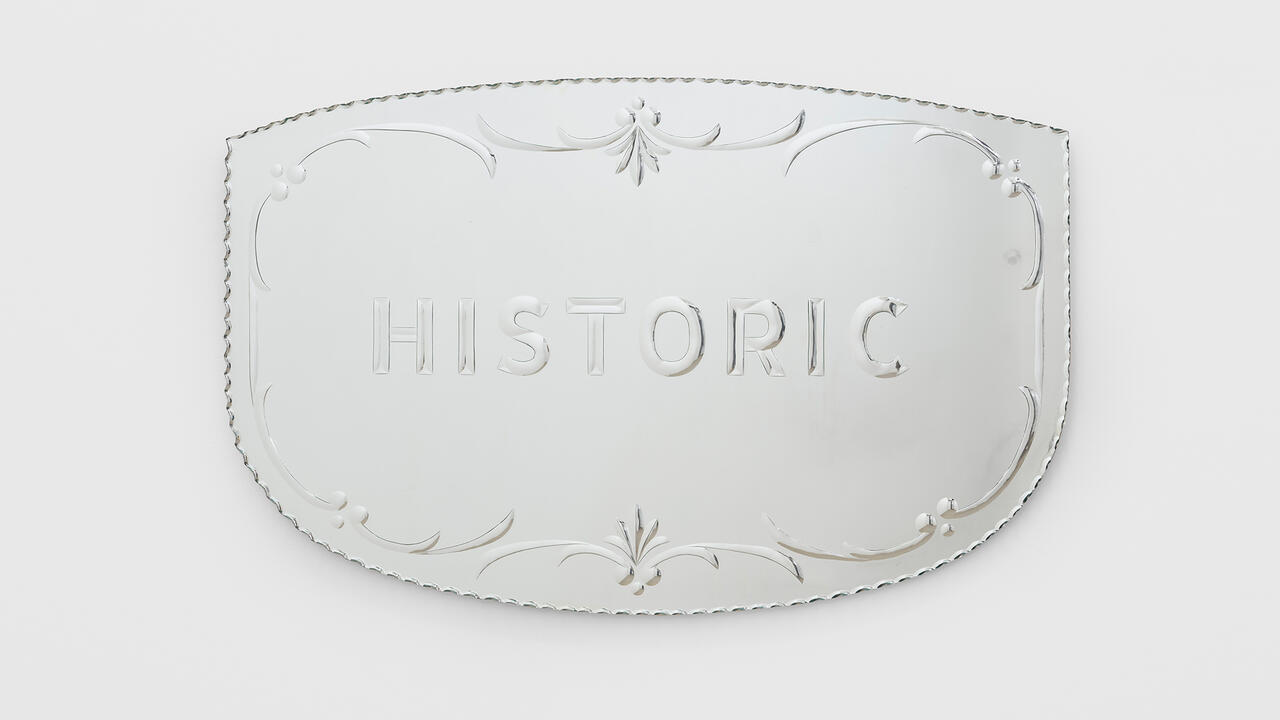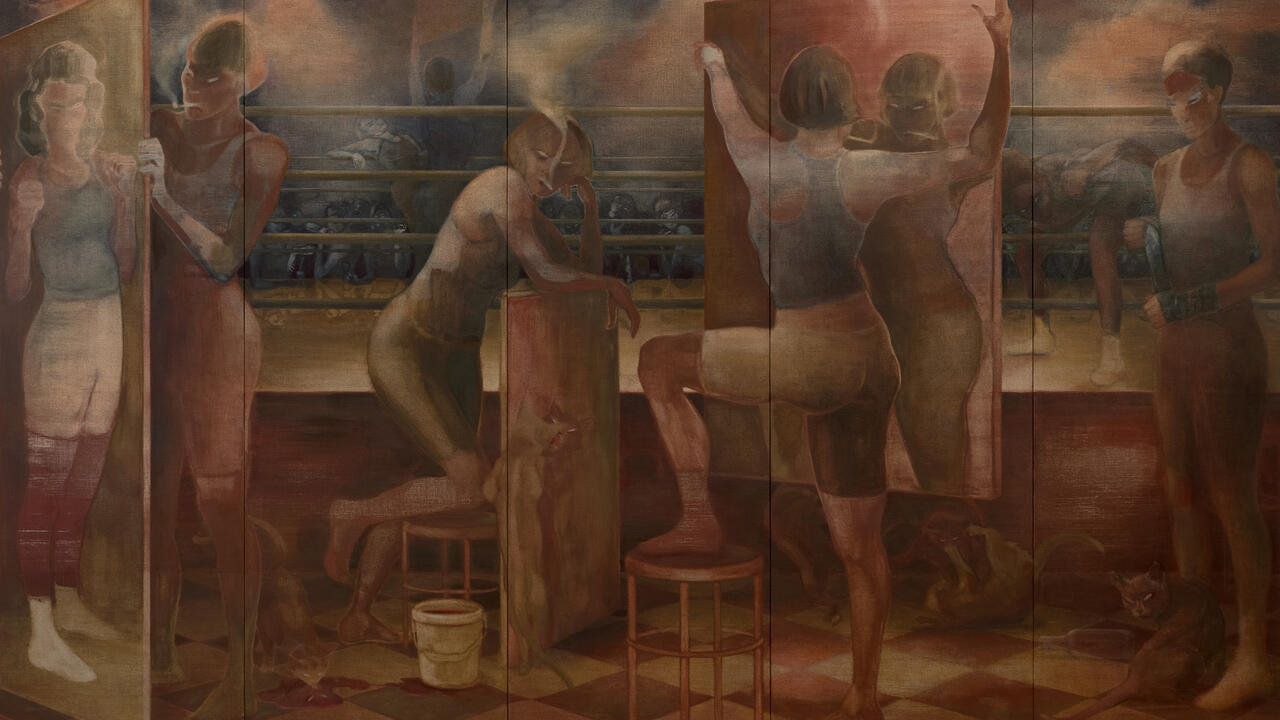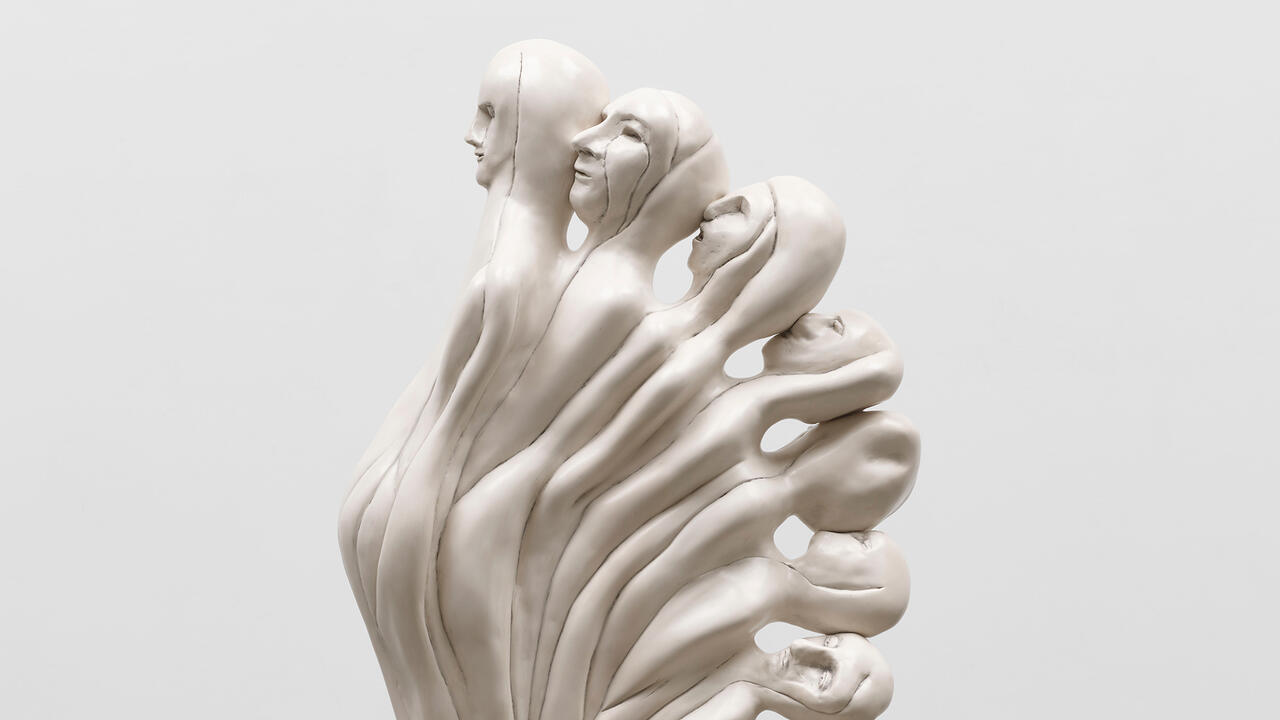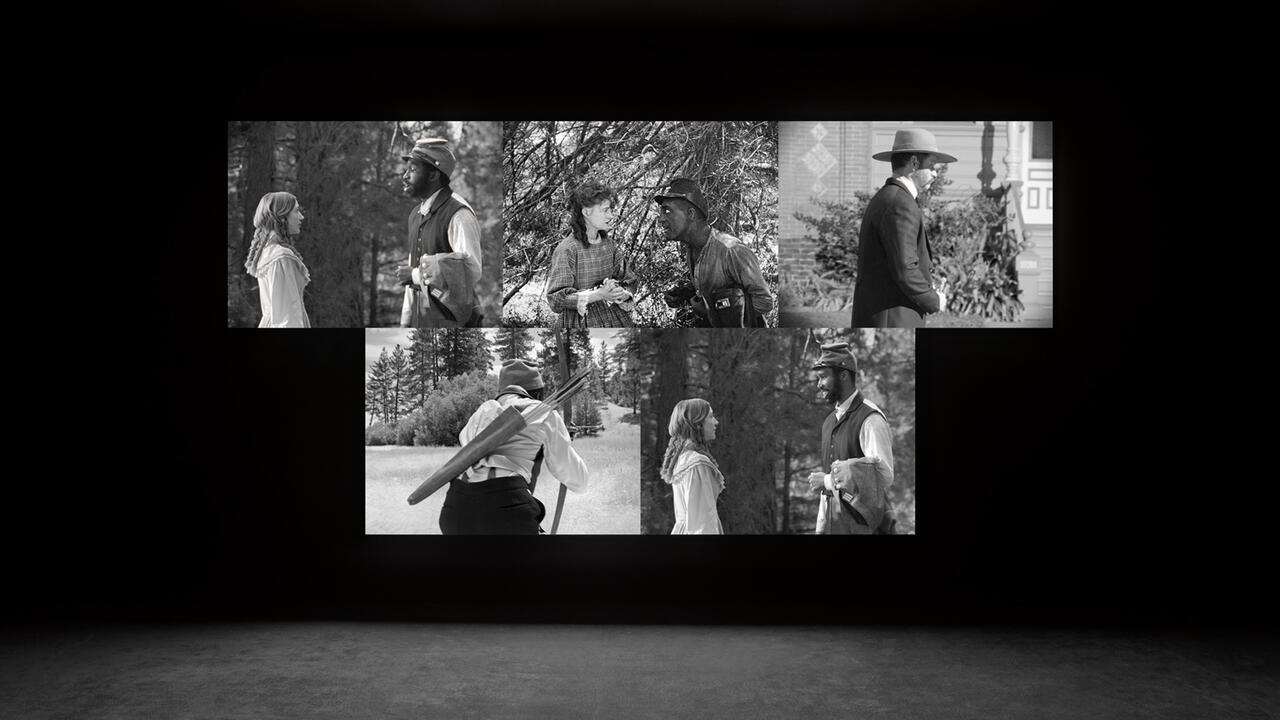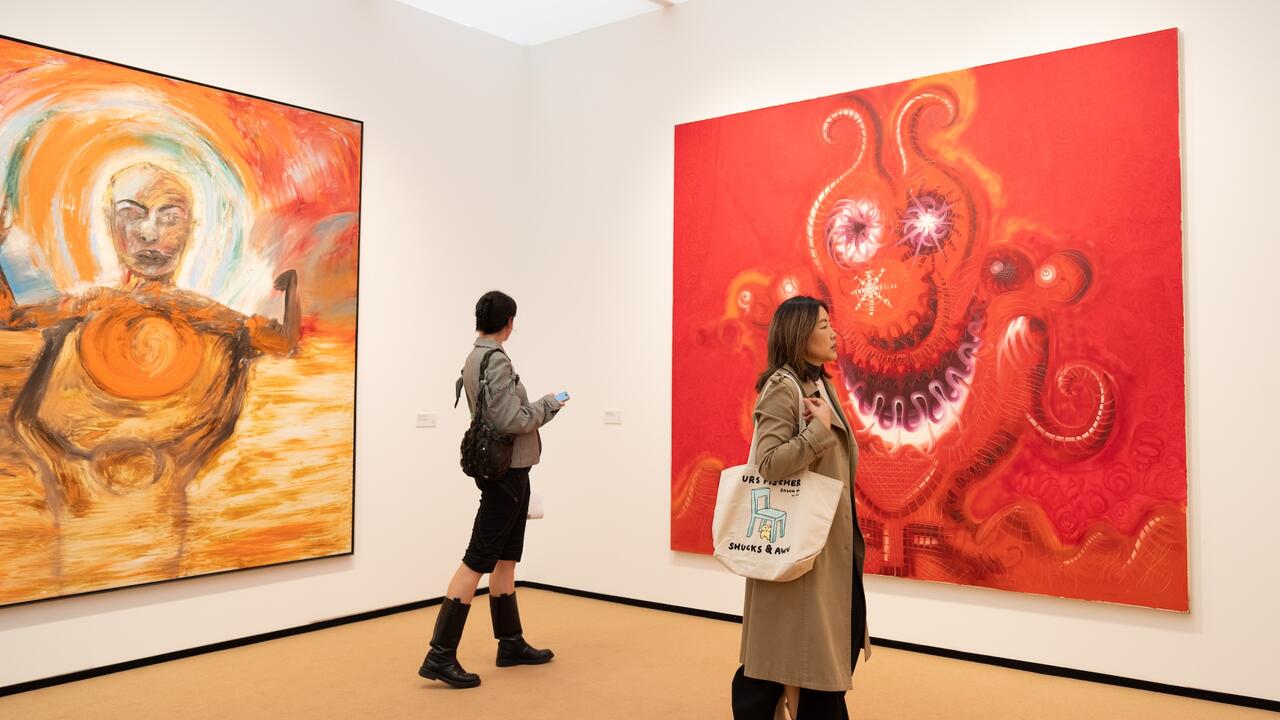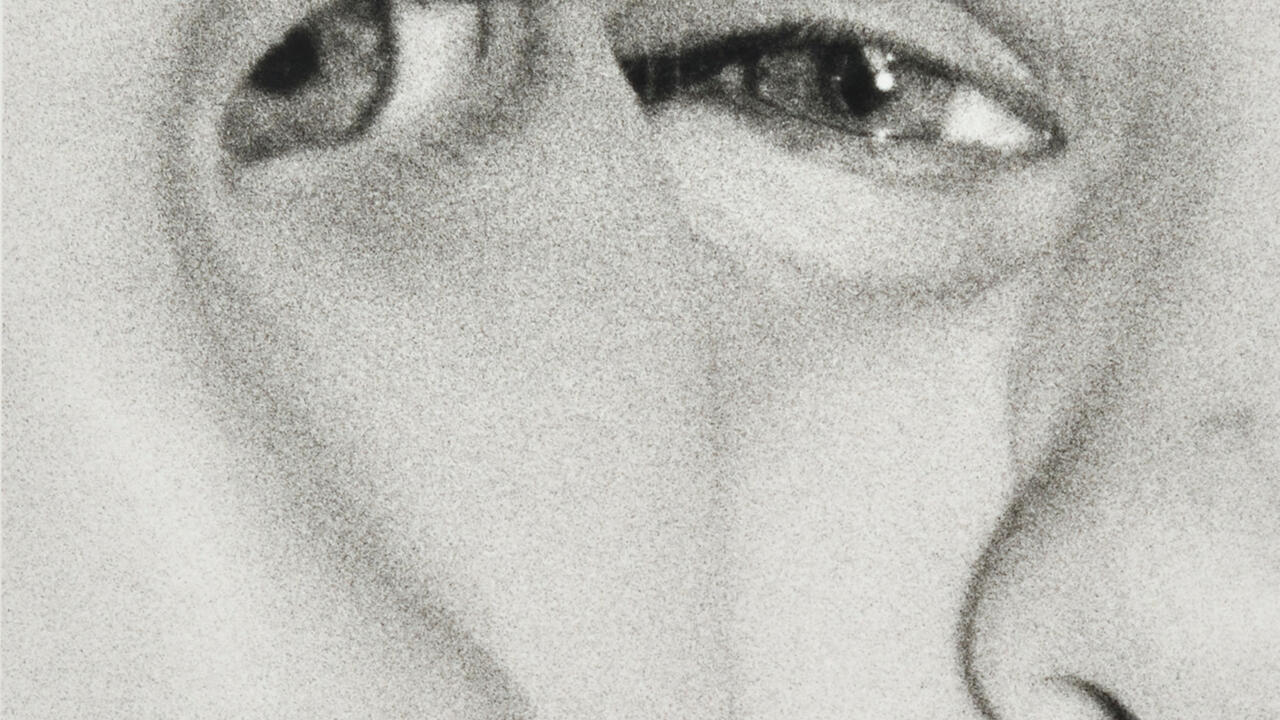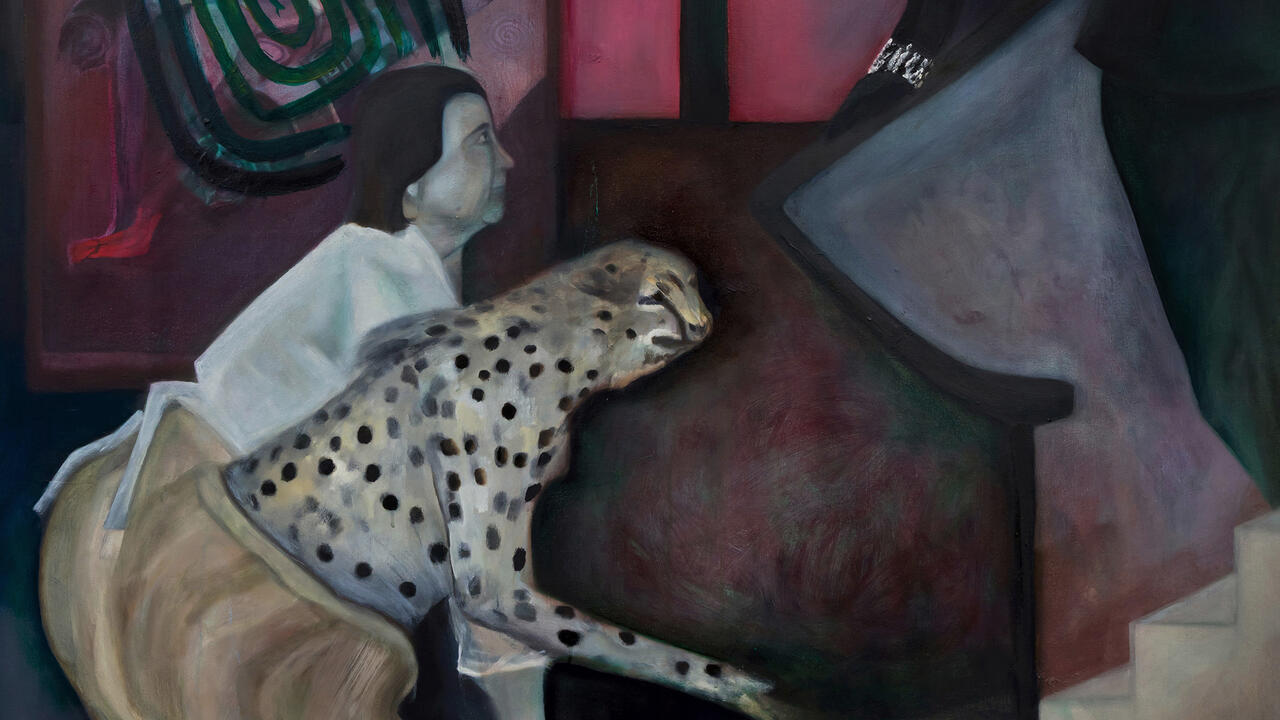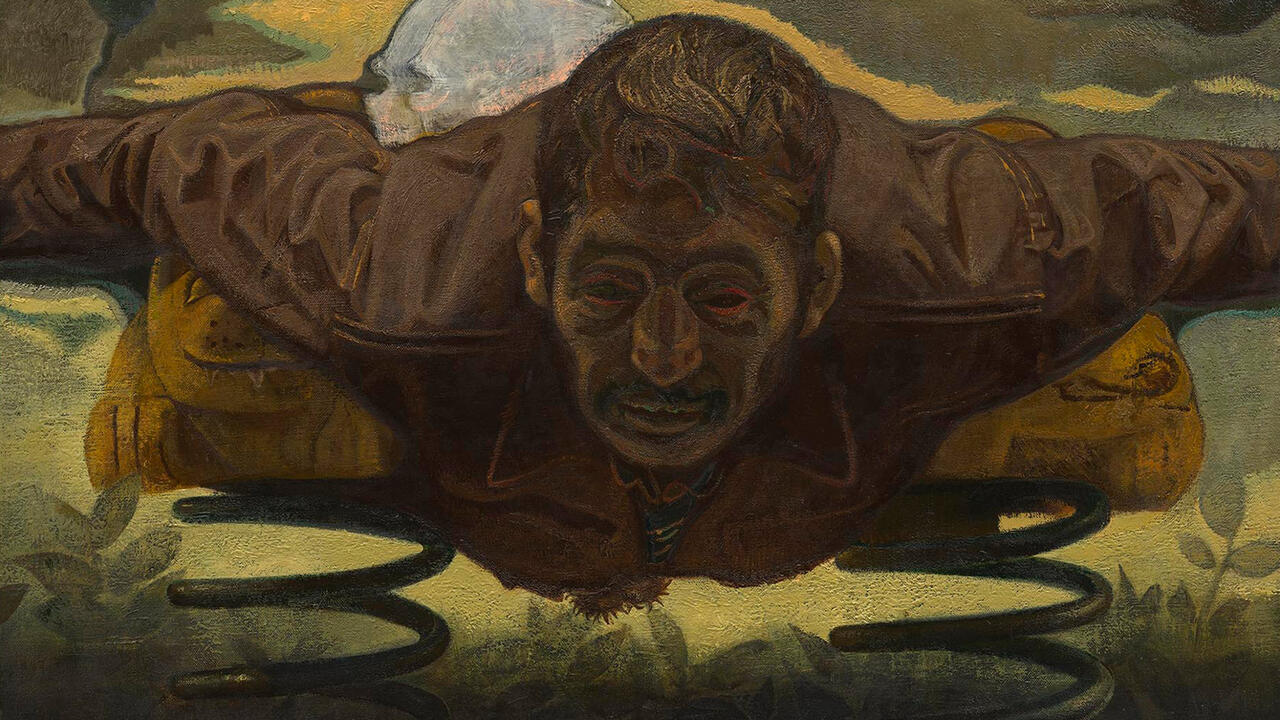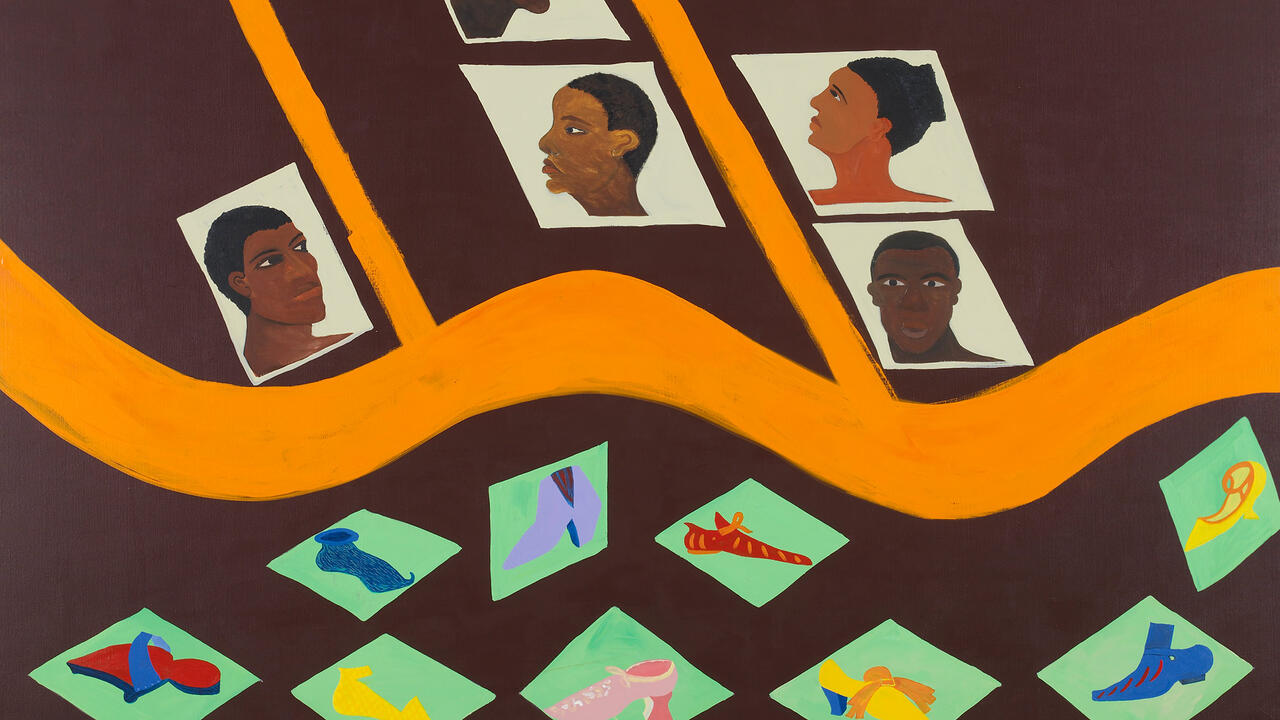Sarah Morris
White Cube, London, UK
White Cube, London, UK

In September 1972, when Sarah Morris still had her baby teeth, the Munich Olympics ended in catastrophe. Black September, a terrorist group linked to the Palestinian Liberation Organization, took 11 members of the Israeli Olympic team hostage and demanded the release of 234 Palestinians imprisoned by Israel. Negotiations with the Israeli authorities, who took command, were complexly botched, and the result was the massacre of all the hostages, the deaths of five terrorists and a German policeman. This much, at least, is certain. A significant part of the narrative’s cause-and-effect is clouded in speculation and contestation, and this historical lacuna is the subject of the artist’s 38-minute, 35mm film 1972 (2008).
It’s interlaced, in trademark Morris style, with a chilly itemizing of the operational metropolis of today (model Munich cityscapes, airborne shots of the Olympic stadium as it is now, office spaces, blue-collar workers silently executing tasks) and nebulous archive footage, accompanied by dubby strings, ominous feedback drones and tinkling bells, courtesy of Liam Gillick. But 1972 is, at heart, a monologue. The speaker, responding face-on to edited-out questioning, is Dr Georg Sieber, a parchment-skinned gent who, 36 years ago, was a police psychologist specializing in non-aggressive policing methods and an adviser to the Olympics’ security team, for whom he modelled worst-case scenarios – including one that exactly predicted the eventual events. Not that this preparation helped. Israel, says Sieber, immediately announced that its people had been attacked in Germany ‘again’ and insisted on complete control. Unfortunately their insistences bore no relation to the reality in Munich. Their plan called for snipers; Sieber, having none available, fell back in desperation on the game-hunters among his team, but they couldn’t use the carbine rifles necessary. Anticipating disaster, he says, the psychologist quit his job before the killing began.
All of which may seem somewhat removed from Morris’ recent work. Her last White Cube show featured a film on Los Angeles, focusing on Hollywood, and geometric paintings abstracting the city’s architecture; her last solo-interview film, Robert Towne (2006), starred a crusty 1970s’ screenwriting demigod. But Munich ’72 is increasingly inextricable from cinema and, via Steven Spielberg, from the fall-out of American cinema in the 1970s. The theatrically released documentary about the Munich Olympics, One Day in September, (1999) slants the story one way, blaming poor German preparation; Spielberg’s $130 million-grossing semi-fictional movie Munich (2005), meanwhile, entangles the known facts in a post-massacre narrative about Mossad agents going after the Black September group. Ending with a sex scene intercut with the murder of the hostages, it attracted fierce criticism for its ostensible naivety. Morris, meanwhile, seems less to want to correct wrong thinking than to point out that cinema is increasingly – and dangerously – the abyssal medium of popular history. Her 1972 ends with a shot of the actress Romy Schneider. Dr Sieber (now an international security expert), who has spent his life being confused with one Manfred Schreiber, the German chief of police in 1972, compares his fate to that of Ms Schneider – who played a character called Sissi in 1955, ’56 and ’57 and forever after was publicly confused with her fictional creation. ‘The real truth’, he had sighed earlier, ‘remains an ideal, a dream.’
This brings us neatly to Beijing, the latest city of wiped-clean surfaces and dark undercurrents to have its architecture condensed into Morris’ abstract canvases. Shown downstairs, the paintings are all about orderly relationships, on the surface at least. In 2028 (Rings) (2008) clusters of interlocking circles set against coloured grids are operant on multiple scales: a cartographic evocation of the ringroads engirdling Beijing, an ecstatic proliferation of Olympic rings as a sort of hyper-logo, and an anxious, diagrammatic thematic of interlocking layers of command. Racked up in groups, with one quartet spreading from a corner like an angled billboard, they’re intensely imposing, sub-zero productions, de-humanizing painting to a virtually unprecedented degree – no brushwork, no flaws in their taped-off lines. It’s an approach that tosses soil on the grave of abstract painting’s humanism and analogizes the ruthless discipline that underlies the spectacle of the Beijing Olympics and China’s current obsession with illusory image-politicking in general.
There’s a faint, although conceptually comprehensible, feeling of the production line about these paintings, reinforced by the weaker ‘Origami’ diffusion series (2006–ongoing – all cubistic jewelling and efficient filling-in) and, unusually for Morris, the canvases’ secondary placement downstairs. Nevertheless, the show’s real area of absorption lay, at least before the Olympics, precisely between the prospect of Beijing and the smouldering anxieties of 1972. This is apparent in the film’s figuring of ambient dread based on the intersection of Olympic spectacles and global politics; and in the fact that, according to Sieber, there’s still no agreed protocol regarding which country has authority – host or attacked nation – in a comparable crisis, so things could go badly wrong again. Morris, whose own production company is named in tribute to The Parallax View (1974), has been breathing in the justifiably paranoid air of 1970s’ American cinema for some time. Here she breathed it out again.









